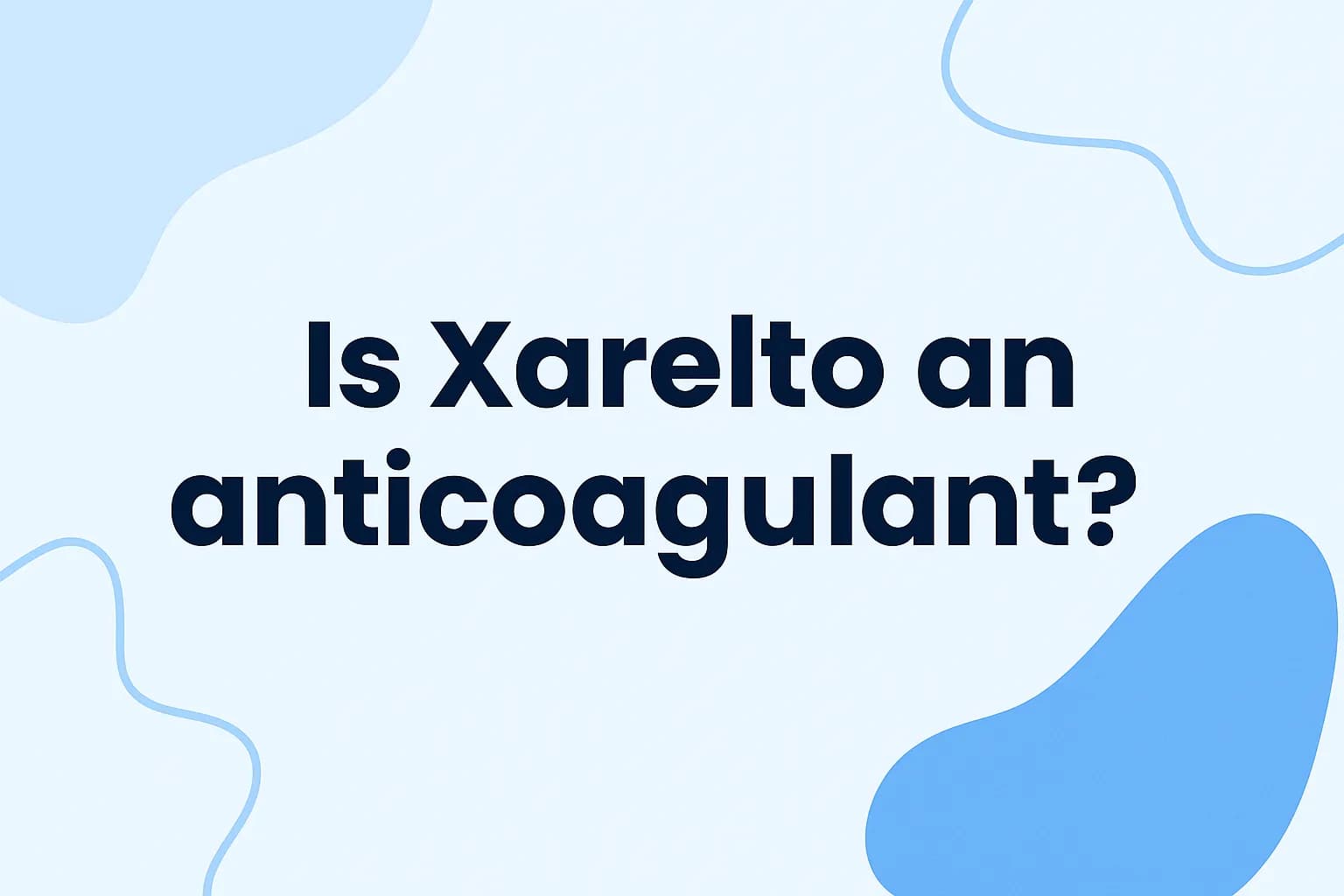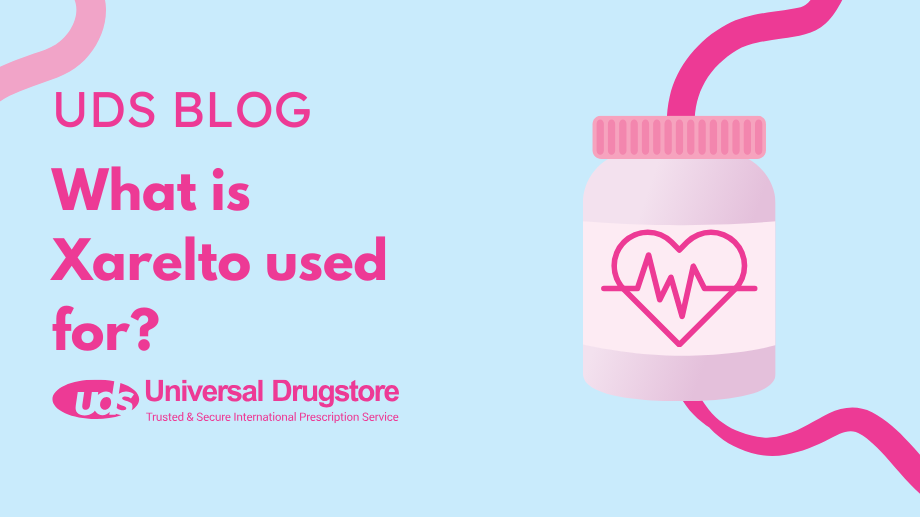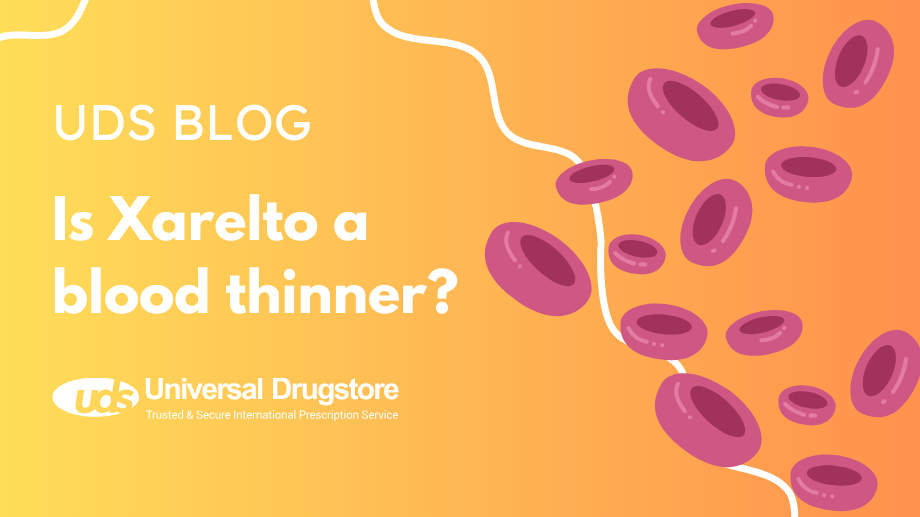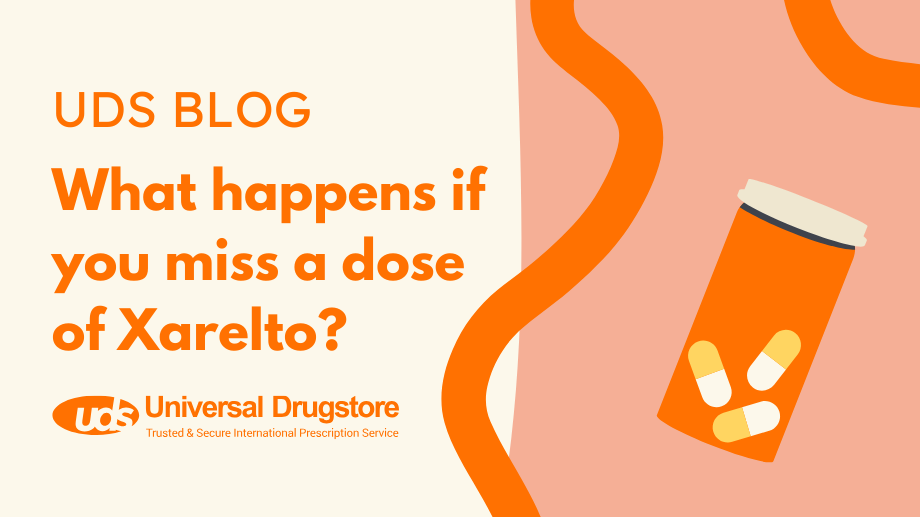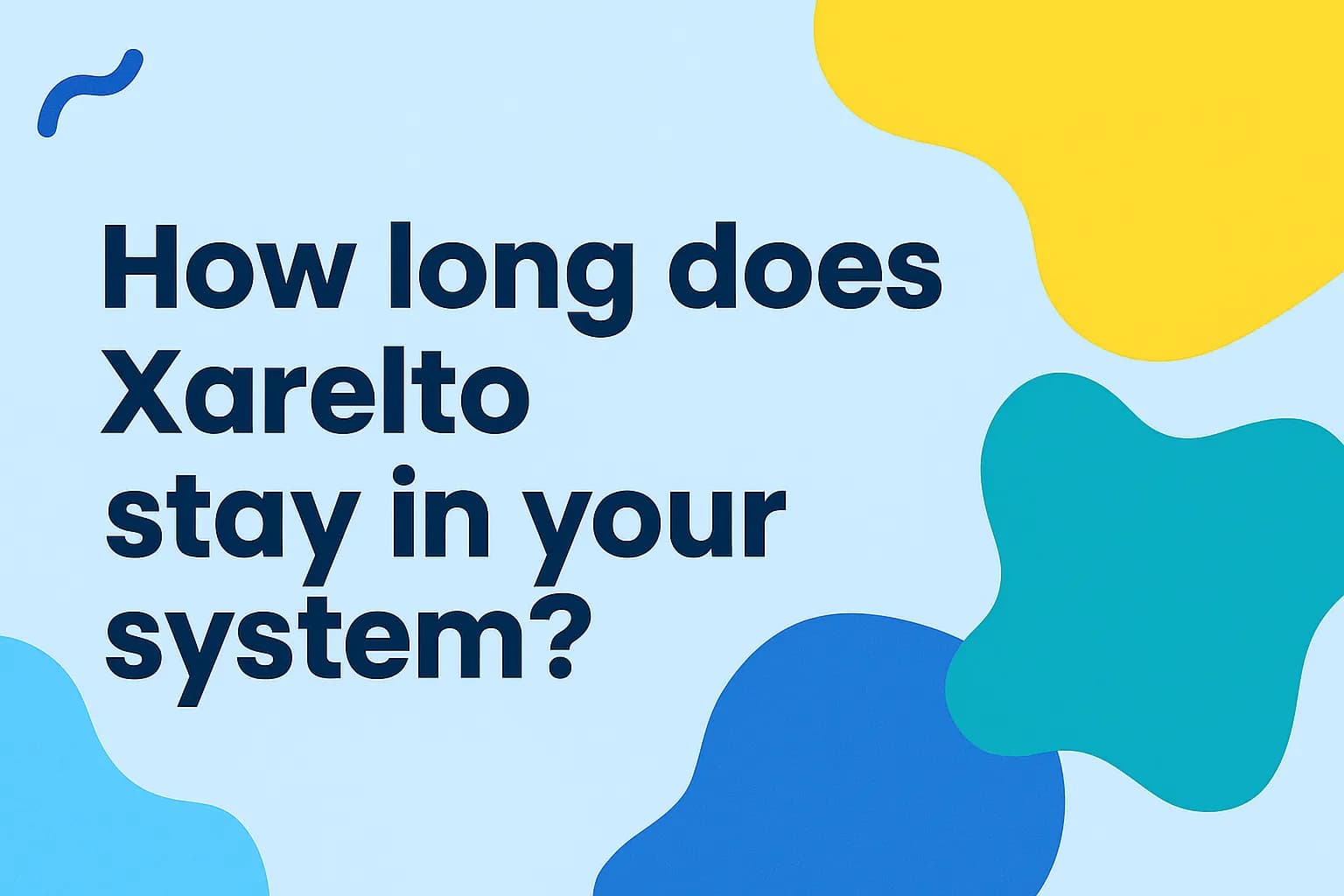Is Xarelto a blood thinner?
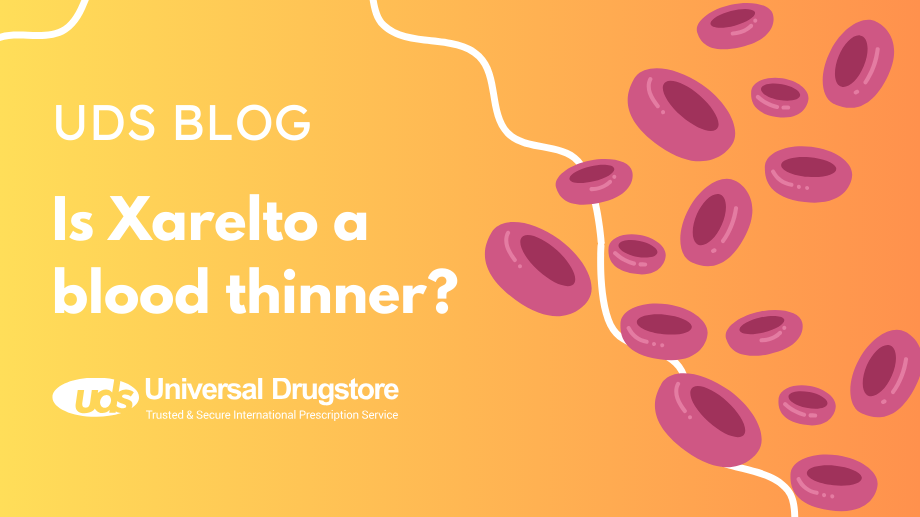
Yes, Xarelto (rivaroxaban) belongs to the category of blood thinners commonly called direct oral anticoagulants (DOACs). DOACs are different from older blood-thinning medications such as warfarin because they affect fewer factors that help to form blood clots. Xarelto only blocks one of the clotting factors found in your blood, an enzyme (protein) called Factor Xa. Warfarin blocks one of the enzymes that use vitamin K to produce clotting factors. Without enough active vitamin K, factors II, VII, IX, and X do not work as well at forming blood clots. Because Xarelto is selective, it can prevent and treat blood clots without the need for regular blood tests like warfarin.
Read on as we go into more detail about what Xarelto is used for and what precautions, drug interactions, and side effects it has. We will also answer some frequently asked questions.
Xarelto FAQs
What is Xarelto used for?
Xarelto is a brand-name medication that is used in both adults and children.
It is used in adults to:
- Reduce the risk of stroke and blood clots if you have non-valvular atrial fibrillation.
- Treat and prevent deep vein thrombosis (DVT).
- Treat and prevent pulmonary embolism (PE).
- Lower the risk of a heart attack or stroke if you have coronary artery disease or peripheral arterial disease when taken with low-dose aspirin.
- Prevent PE and DVT after knee or hip replacement surgery.
- Reduce the risk of DVT or PE from occurring again.
It is used in children to:
- Treat and prevent DVT or PE in those who have received at least 5 days of injectable blood thinner.
- Prevent blood clots in children 2 years of age and older with congenital heart disease who have undergone a Fontan procedure.
How does Xarelto work to prevent blood clots?
Xarelto is considered a factor Xa inhibitor. Factor Xa is a key enzyme involved in your body’s blood clotting process. By blocking factor Xa, Xarelto reduces your blood’s ability to form clots. This helps treat conditions like DVT and PE while also reducing the risk of stroke in people with AFib. However, it is important to note that while Xarelto prevents clot formation, it does not dissolve existing clots.
What doses of Xarelto are available?
Xarelto is available in the following dosage forms and strengths:
- 2.5 mg tablets
- 10 mg tablets
- 15 mg tablets
- 20 mg tablets
- 1 mg/ml oral suspension
How should you take Xarelto?
Xarelto is typically taken by mouth once or twice a day, depending on the condition being treated. For most conditions, taking Xarelto with food is generally recommended. If you are taking it to prevent blood clots due to AFib, it is recommended that you take it once daily with your evening meal.
For adults:
- If you take it once a day and miss a dose, take it as soon as you remember on the same day. Do not double up on the next dose.
- If you take it twice a day and miss a dose, take it as soon as you remember. You can take 2 doses at once if needed.
For children:
- Doses are based on body weight and determined by a healthcare provider.
- Follow provider instructions for missed doses.
- If unable to swallow tablets, they may be crushed and mixed with applesauce and taken immediately with more food.
Do not change your dose or stop Xarelto unless your healthcare provider tells you to.
What is the most common side effect of Xarelto?
The most common side effect in adults is bleeding. In children, common side effects include bleeding, cough, vomiting, stomach virus, and rash.
Other possible side effects include:
- Back pain
- Dizziness
- Headache
- Fatigue
- Stomach pain
- Pain in arms and legs
- Anxiety
- Trouble sleeping
Rare serious side effects:
- Severe bleeding
- Anaphylaxis (allergic reactions)
- Spinal or epidural blood clots
Does Xarelto interact with any foods or medications?
Xarelto may interact with:
- Other anticoagulants (e.g., heparin, aspirin, NSAIDs)
- CYP3A4 inhibitors (e.g., erythromycin, ketoconazole, ritonavir)
- CYP3A4 inducers (e.g., rifampin, carbamazepine, phenytoin, St. John’s wort)
- SNRIs
Is there a Boxed Warning with Xarelto?
The FDA’s Boxed Warning includes:
- Increased risk of blood clots if stopped too soon
- Risk of spinal or epidural hematomas with anesthesia or spinal puncture
What warnings are there with Xarelto?
Tell your doctor if you have:
- Bleeding problems
- Kidney or liver disease
- Antiphospholipid syndrome
- An artificial heart valve
- Surgery or dental procedure scheduled
- Pregnancy or breastfeeding
How should you store Xarelto?
Store at room temperature between 68°F to 77°F (20°C to 25°C). Keep in original packaging, upright, and away from heat, cold, moisture, children, and pets.
Can Xarelto be used for long-term anticoagulation therapy?
Yes. Xarelto has been shown to be generally safe for long-term use depending on the condition being treated.
Does Xarelto interact with alcohol or certain foods?
There is no known food interaction. Alcohol may increase bleeding risk, so consult your provider before drinking.
Will you need to stop Xarelto before surgery?
Yes, usually at least 24 hours prior. Always inform your surgeon and the prescribing healthcare provider.
How long does it take for Xarelto to start working after you take it?
It begins working within a few hours (2 to 4 hours for full effect).
Related medications
- Eliquis (apixaban)
- Pradaxa (dabigatran)
- Arixtra (fondaparinux)
- Savaysa (edoxaban)
- Coumadin (warfarin)
- Lovenox (enoxaparin)
